May 31, 2025 | 04:51 GMT +7
May 31, 2025 | 04:51 GMT +7
Hotline: 0913.378.918
May 31, 2025 | 04:51 GMT +7
Hotline: 0913.378.918

The shipment of mangoes exported this time is 18 tons of Keo mangoes to the South Korean market, for which Long Binh Agricultural Cooperative signed for consumption with Hoang Phat Fruit Co., Ltd. Photo: Le Hoang Vu.
Recently, the An Phu District People's Committee coordinated with the An Giang Department of Agriculture and Rural Development to solemnly organize the launching ceremony of the exportation of Keo mango to South Korea and sign a memorandum of understanding to collaborate in supporting farmers in their production, linkage, and consumption of Keo mango.
The shipment of mangoes exported this time is 18 tons of Keo mangoes to the South Korean market, for which Long Binh Agricultural Cooperative signed a consumption contract with Hoang Phat Fruit Co., Ltd. In addition, the Cooperative also linked with An Giang Food and Vegetables Joint Stock Company (ANTESCO) to build a Keo mango raw material area for processing.
Speaking at the ceremony, Mr. Trang Cong Cuong, Chairman of the An Phu District People's Committee, said: An Phu is an upstream district of An Giang province bordering Cambodia, with natural blessings in terms of soil, climate, and water resources. These factors have created favorable conditions for An Phu to develop tropical fruit trees.
In recent times, the district's guidelines for converting ineffective rice-growing land to growing vegetables and fruit trees have been effective. Currently, the total fruit tree area in the district reaches 2,061 hectares. Of which, the mango production area is about 1,860 hectares, accounting for over 90% of the district's fruit tree area and concentrated mainly in Khanh Binh, Khanh An, and Phu Huu communes and Long Binh town; the mango output reaches over 55,000 tons/year. The Keo mango plant currently has over 300 hectares and grows strongly each year.
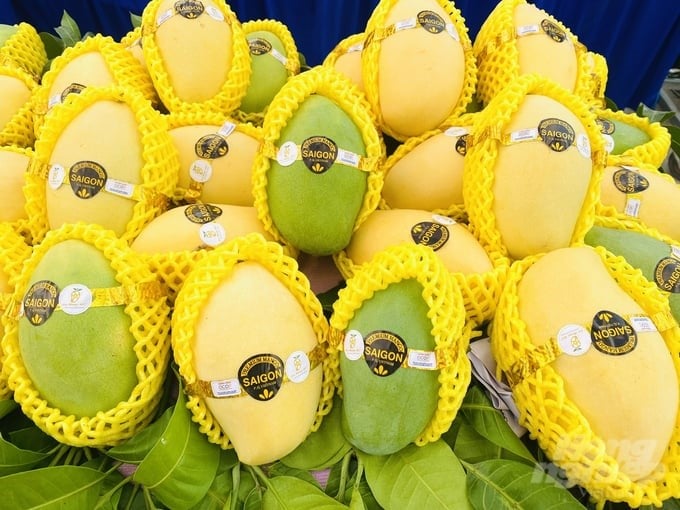
Currently, An Phu's mango area produced according to the company's standards reaches over 600 hectares, including 61 growing area codes and a Keo mango growing area following GlobalGAP standards with an area of 365 hectares. Photo: Le Hoang Vu.
In order for An Phu district's mangoes to be exported to demanding markets such as the US, Australia, South Korea, etc., and to conquer other demanding markets, local governments at all levels, businesses, cooperatives, and people have made efforts for more than 10 years of arduous and challenging negotiations. Mangoes must ensure strict requirements of partners, such as pesticide content, harmful insects, traceability, irradiation, etc.
Currently, the mango production area according to the company's standards reaches over 600 hectares, including 61 growing area codes and a Keo mango growing area following GlobalGAP standards with an area of 365 hectares in Phu Huu and Khanh An communes. Particularly, the Keo mango product of Long Binh Agricultural Cooperative has been certified as a 3-star OCOP product since 2021.
"In the coming time, An Phu District People's Committee will continue to create a favorable environment and have policies to support businesses, organizations, and people in producing, pre-processing, and trading mango products. Promote support for building stable raw material areas; develop sustainable value chain linkages; continue to promote existing production areas; and accelerate the process of granting codes to remaining growing areas to increase export output in the upcoming time. At the same time, coordinate with fruit export companies to survey other mango gardens to sign export contracts," Mr. Trang Cong Cuong emphasized.
The reason for the name "Keo" mango is because this variety originates from Takeo, a province of Cambodia that grows this type of mango a lot. An Phu district borders Takeo province and has the same geographical conditions and climate as Takeo, so the Keo mango variety grows and adapts well when planted in An Phu.

Mangoes from An Phu district are exported to demanding markets such as the US, Australia, South Korea, etc., and conquer other demanding markets in the world. Photo: Le Hoang Vu.
Mr. Huynh Thanh Minh, Director of Long Binh Agricultural Cooperative in An Phu district, which directly links with the business to export 18 tons of Keo mangoes to South Korea, excitedly said: In recent years, Keo mangoes grown in An Phu have brought high economic value to farmers, with an average annual income of millions of dong per hectare that is many times higher than for rice growing.
However, it is only a temporary positive effect that does not bring sustainable efficiency. In 2017, Long Binh Agricultural Cooperative was born with the mission of building a sustainable development strategy in the household economic linkage chain for Keo mango in particular and fruit trees in general. To develop regional products associated with linkage supply chains to create strength in Keo mango production and consumption, the Cooperative always puts quality standards on top. Thus, the Cooperative decided to build a top-quality Keo mango area in the Mekong Delta region.
"Besides, the Cooperative also builds growing area codes, barcodes, traceability, exclusive brands, etc. especially, the Cooperative will convey values to members and Keo mango producers in the spirit of 'We are the producers, we are the consumers'. Initially, we have achieved a lot of success. The proof is that we have conquered demanding markets such as the US, Australia, and South Korea, and have created jobs for hundreds of workers with stable income, contributing to hunger eradication and poverty reduction for the locality," said Mr. Huynh Thanh Minh, Director of Long Binh Agricultural Cooperative.
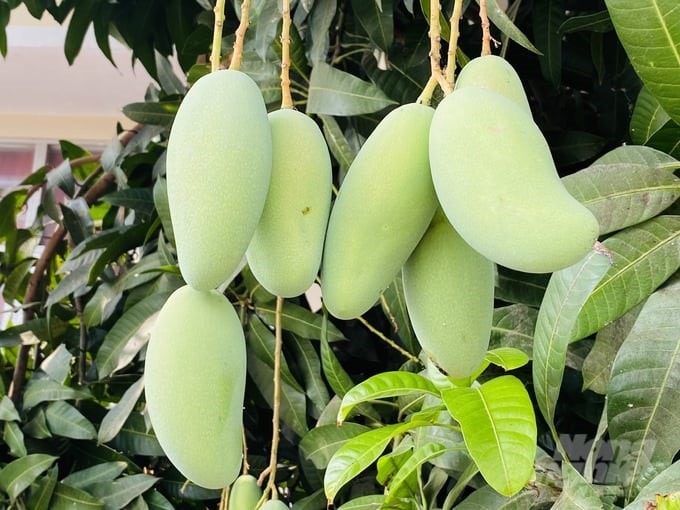
In particular, the Keo mango product of Long Binh Agricultural Cooperative has been certified as a 3-star OCOP product since 2021. Photo: Le Hoang Vu.
Mr. Nguyen Si Lam, Director of An Giang Department of Agriculture and Rural Development, said: In the fruit tree industry, the mango plant is identified as a key group with high economic value, is oriented towards strong transformation and a great contribution to the growth of the cultivation sector.
As of now, the total area of fruit trees in the province is 19,700 hectares, of which the mango area is approximately 12,633 hectares and yields more than 225,000 tons/year. An Phu district alone has the second-largest mango-growing area in the province, only after Cho Moi district. Especially with geographical advantages, the locality has a delicious and quality Keo mango variety with an area of over 1,860 hectares and an output of more than 30,000 tons/year, making a huge contribution to the district and the whole province. An Phu also has 350 hectares of Keo mangoes that meet GlobalGAP standards to meet foreign markets.
In addition to technical support orientations to increase productivity and quality of mango products, linking production and consumption of products in general and mangoes in particular according to the value chain has been one of the province's top priorities in promoting and creating added value for products in recent times.
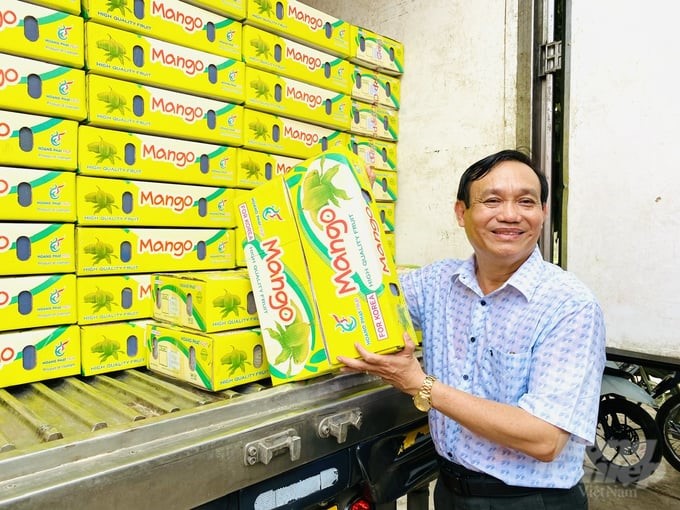
Linking production and consumption of mangoes according to the value chain is one of An Giang's top priorities in promoting and creating added value for products. Photo: Le Hoang Vu.
The An Giang agriculture sector proposed that the locality needs to further strengthen the work of calling companies and businesses to link the production and consumption of fruit trees in the district. Support participating subjects in displaying products at exhibitions, fairs, etc. inside and outside the province to promote local products to consumers and attract businesses' investment. In addition, strengthen the mobilization of gardeners to participate in the collective economy and apply new scientific and technical advances to production; promote the work of promotion and market connection; and strengthen mango cooperatives, especially mango cooperatives recognized by GlobalGAP, to operate effectively.
The An Giang agriculture sector encourages gardeners, members of cooperatives, and cooperative groups to strengthen production linkages with each other to ensure mango output with uniform quality and food safety, aiming at linking with purchasing companies and businesses.
Promote mobilization and guidance for people to innovate production processes towards safety, VietGAP standards, and GlobalGAP standards; use biological fertilizers and organic microorganisms; closely monitor and inspect pesticide residues on mango fruit. At the same time, strengthen linkages between export processing businesses and cooperatives and cooperative groups to consume type 2 and type 3 mangoes to significantly reduce pressure on fresh fruit exports, aiming to reach remote and demanding markets such as the US and Europe.
Translated by Huyen Vu Thu

(VAN) Reciprocal tariffs are exerting pressure on U.S. exports, prompting Vietnamese firms to shift their focus to Muslim markets, Thailand, and Brazil.
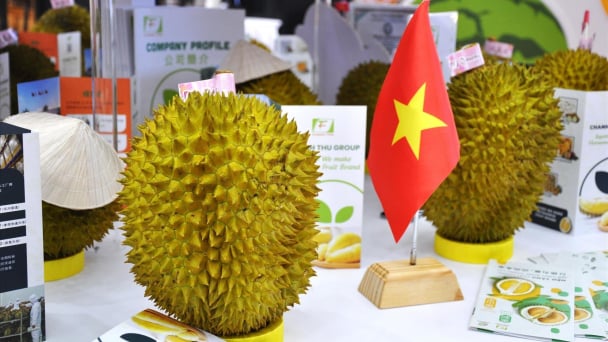
(VAN) A free booth for two years at Xinfadi, Beijing's largest wholesale market, will be allocated to Vietnam's agricultural products.
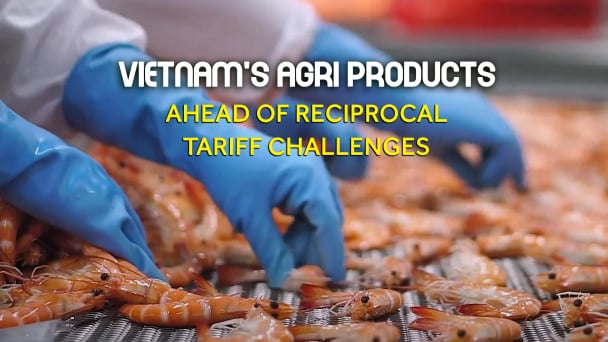
(VAN) Vietnamese shrimp exporters are actively looking for alternative markets and accelerating shipments to the United States in response to the pressure of impending reciprocal tariffs. This is occurring during a temporary tariff suspension.
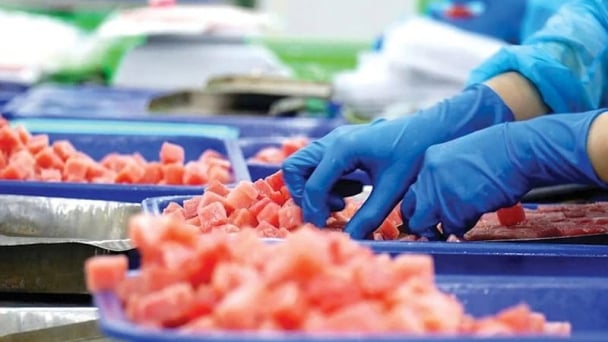
(VAN) The import-export turnover between Vietnam and Singapore rose amid a trade rebound, with machinery, electrical equipment, and fuels making up the majority of the transaction value.
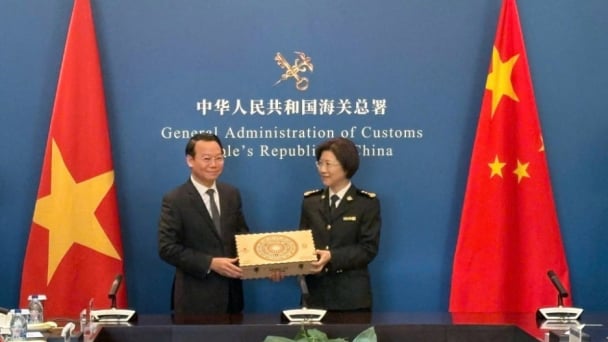
(VAN) Director General of the General Administration of Customs of China, Ms. Sun Mai Jun, has pledged to implement measures that will ease the import process for Vietnamese agricultural products.
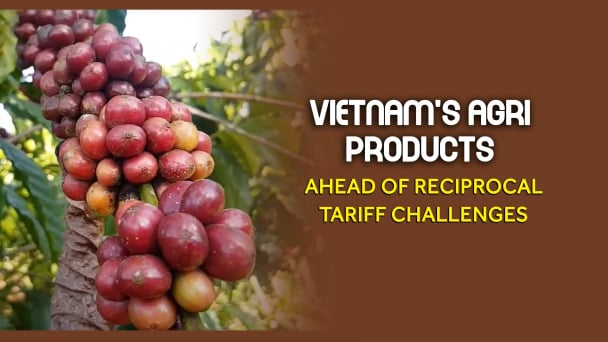
(VAN) Although Vietnam is still increasing its coffee exports, the industry is currently in the process of determining market strategies in response to the U.S. imposition of reciprocal tariffs.

(VAN) With rising demand in Muslim-majority countries, Halal certification is becoming a critical passport for Vietnamese agricultural products seeking sustainable market access and consumer trust in the Middle East and Africa.